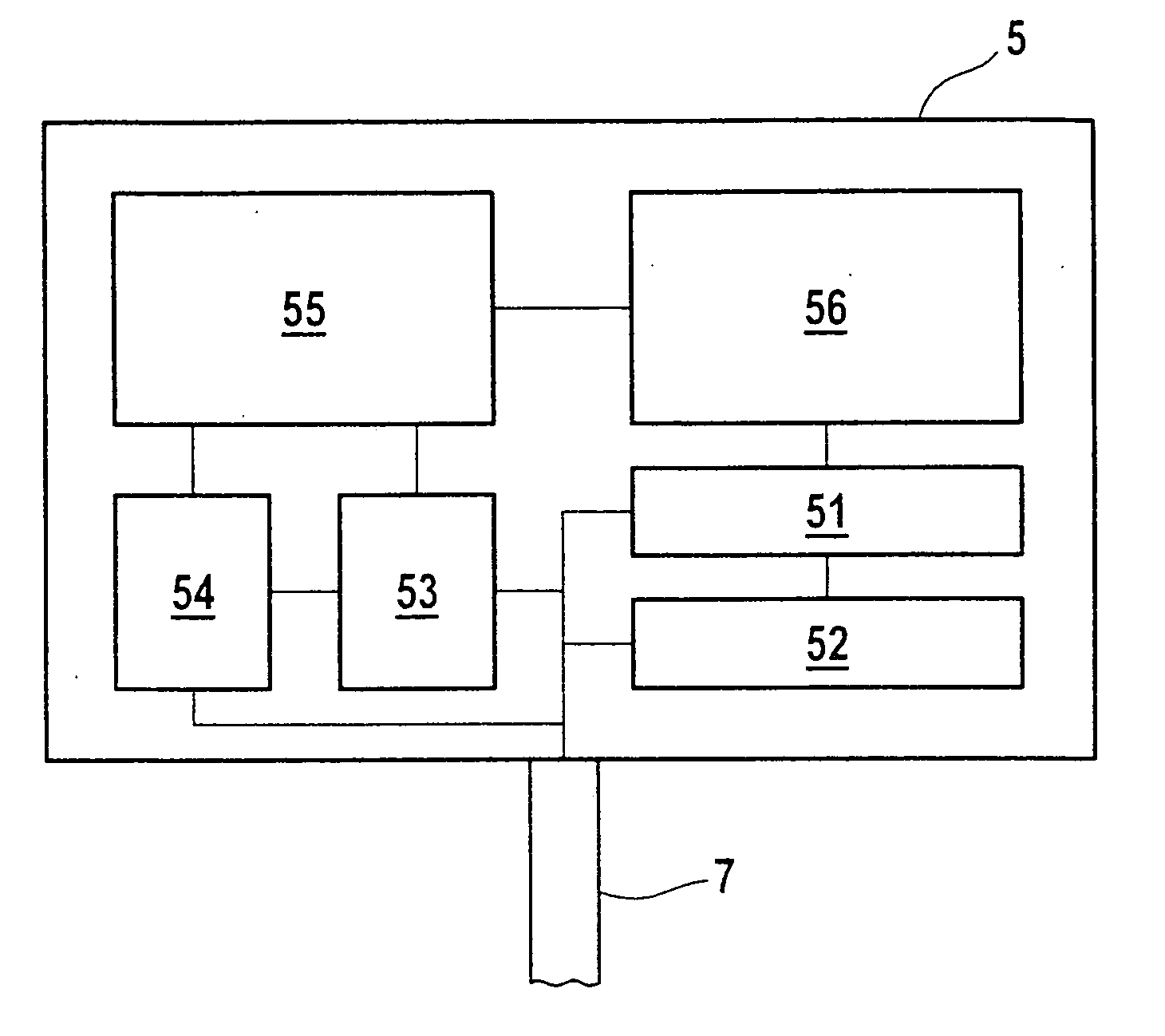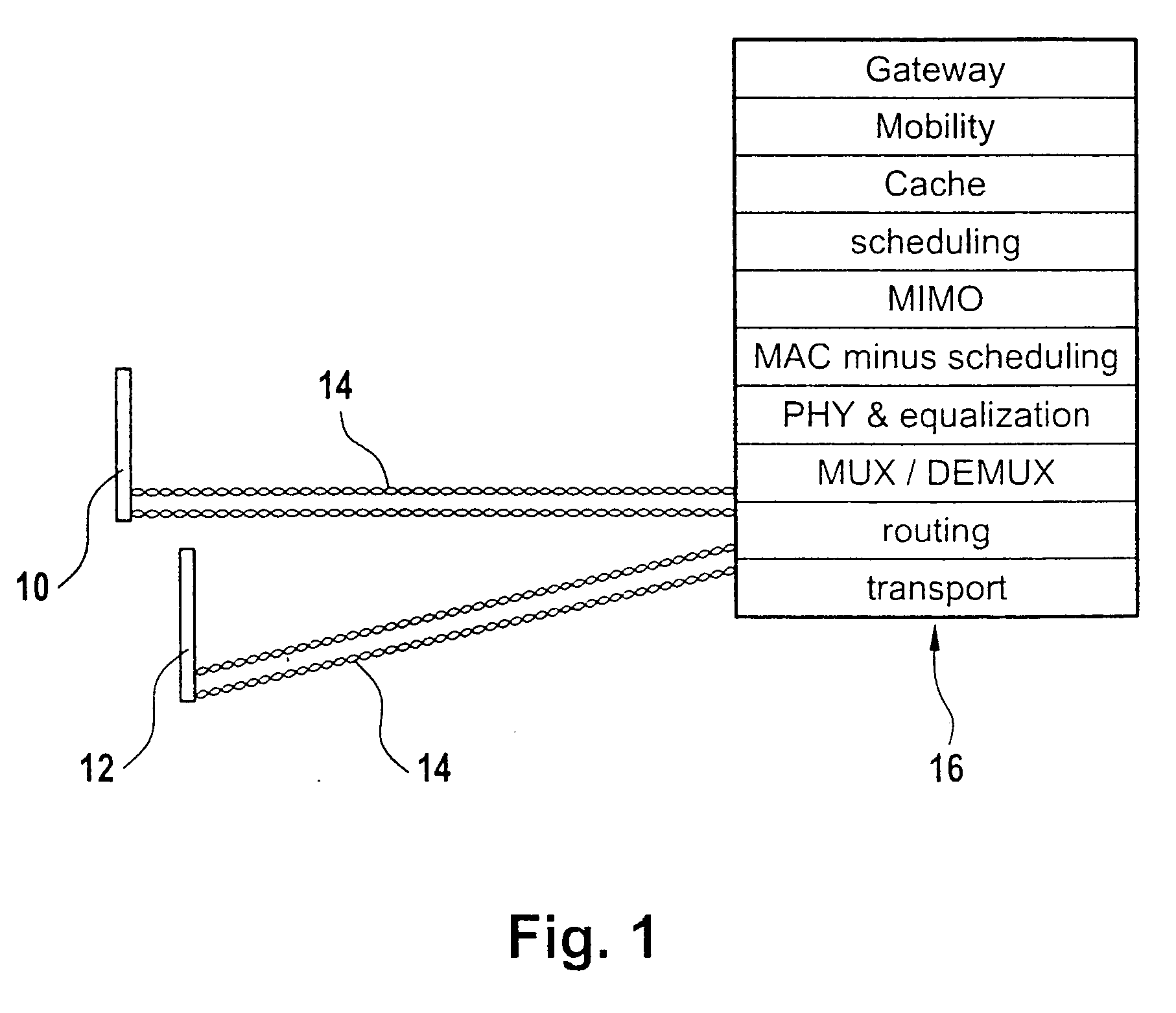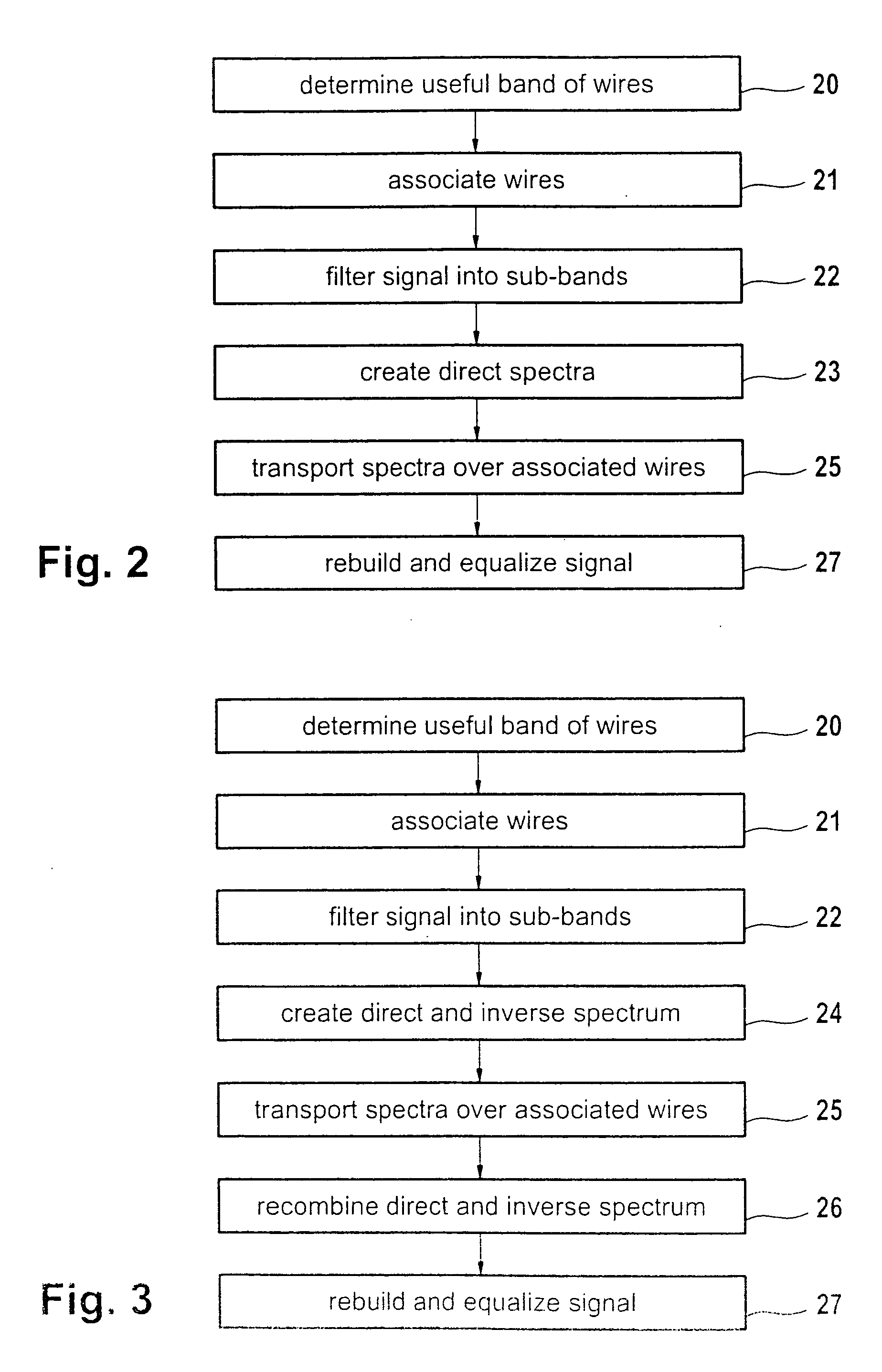Method for transporting a signal in a radio network
- Summary
- Abstract
- Description
- Claims
- Application Information
AI Technical Summary
Benefits of technology
Problems solved by technology
Method used
Image
Examples
first embodiment
[0041]FIG. 2 is a general flowchart of the method according to the present invention;
[0042]FIG. 3 is a general flow chart of the second preferred embodiment;
second embodiment
[0043]FIG. 4 illustrates exemplarily the processing of a signal for transport according to the present method;
[0044]FIG. 5 shows schematically an embodiment of a radio controller according to the present invention; and
[0045]FIG. 6 shows schematically an embodiment of a radio head according to the present invention.
PUM
 Login to View More
Login to View More Abstract
Description
Claims
Application Information
 Login to View More
Login to View More - R&D
- Intellectual Property
- Life Sciences
- Materials
- Tech Scout
- Unparalleled Data Quality
- Higher Quality Content
- 60% Fewer Hallucinations
Browse by: Latest US Patents, China's latest patents, Technical Efficacy Thesaurus, Application Domain, Technology Topic, Popular Technical Reports.
© 2025 PatSnap. All rights reserved.Legal|Privacy policy|Modern Slavery Act Transparency Statement|Sitemap|About US| Contact US: help@patsnap.com



